Chives growing in the garden are often harvested in their fresh state, and both the flowers and the leaves can be used as a delicious herb with a mild savoury flavor. Chive leaves can also be dried and preserved, to use throughout the year in your recipes. Learn how to dry chives, to use these wonderful herbs long after the gardening season is done.
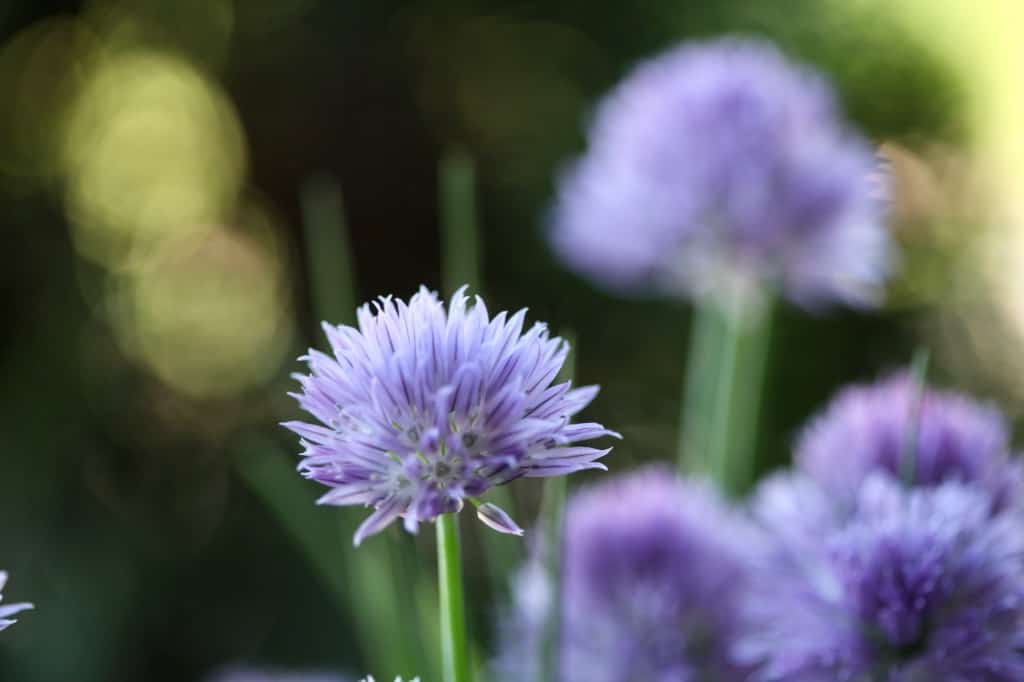
Have you ever used chives from the garden as an edible herb? These sweet perennial plants are very common, and sometimes overlooked as herbs for our cooking.
If you like onions and garlic however, you will love chives.
Chives are amazing. They have a lovely mild onion flavor and are a perfect addition to a large variety of dishes.
They are also perennial herbs which are very hardy, and are easy to grow.
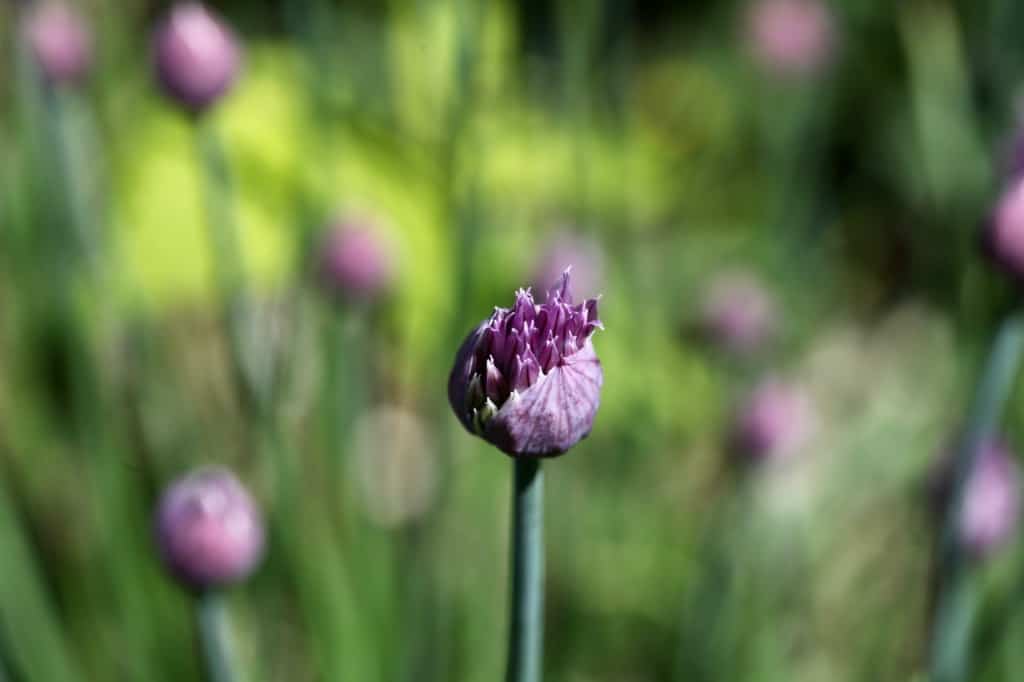
Where To Find Chives
Believe it or not, many people grow chives in the flower garden. That's where you will find them in my garden.
Chives are often found growing in both the herb garden, as well as the perennial flower garden.
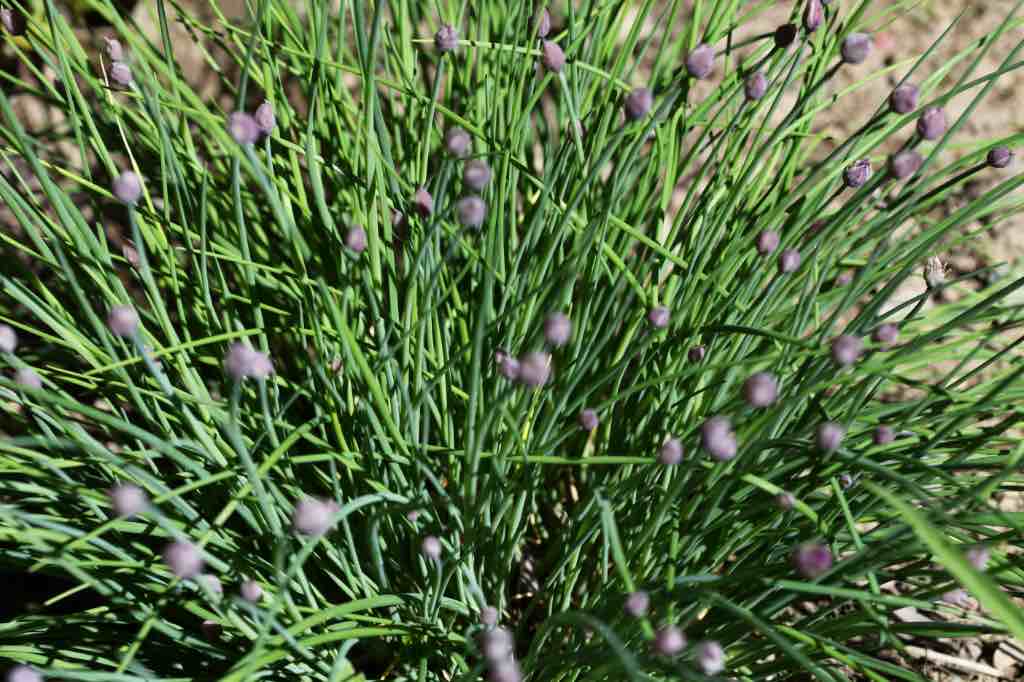
They are often enjoyed for their cute pompom shaped purple flowers that are produced in late spring. Some are never brought into the kitchen, where they can be used and enjoyed for their great savoury flavor.
In fact that was me, many years ago when I first started gardening.
A neighbour had a row of chives growing along the foundation of her house. I loved the look and wanted that same look in my own garden.
When I started my first garden I grew those same chives, as perennial flowers. I loved the look of the spiky leaves, and the round lavender coloured blooms.

A few years later I discovered the value in the chive leaves and blossoms. I learned to appreciate the beautiful flavour and garnishes that they add to many dishes.
Now they are valued not only for their appearance in the garden, but also for their edible nature and wonderful flavor.
If you have a lot of chives growing in your garden, either in your herb or flower garden, consider preserving some of the leaves for later use.
Using chives during gardening season is fabulous, however using the herbs that you have preserved in the off season is even better.
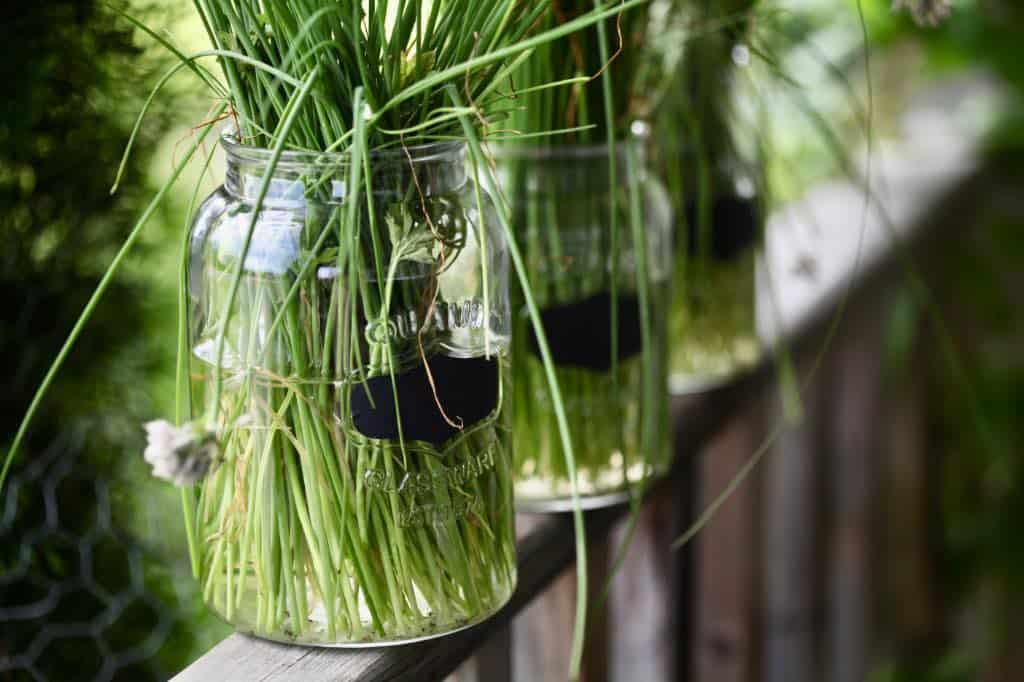
How To Dry Chives
Chives are easy to dry, and the process is very simple.
These herbs can be dried using a number of different drying techniques, and we will have a look at each one.
Before looking at the drying process, let's discuss the harvest and preparation of the chives.
Harvesting The Chives
Chives will continue to grow throughout the entire growing season.
You can harvest chives several ways, including:
- cut the fresh chive blades off in bunches, by the handful
- or rather, selectively harvest the tallest and largest stalks, allowing the smaller chive stems to grow on.
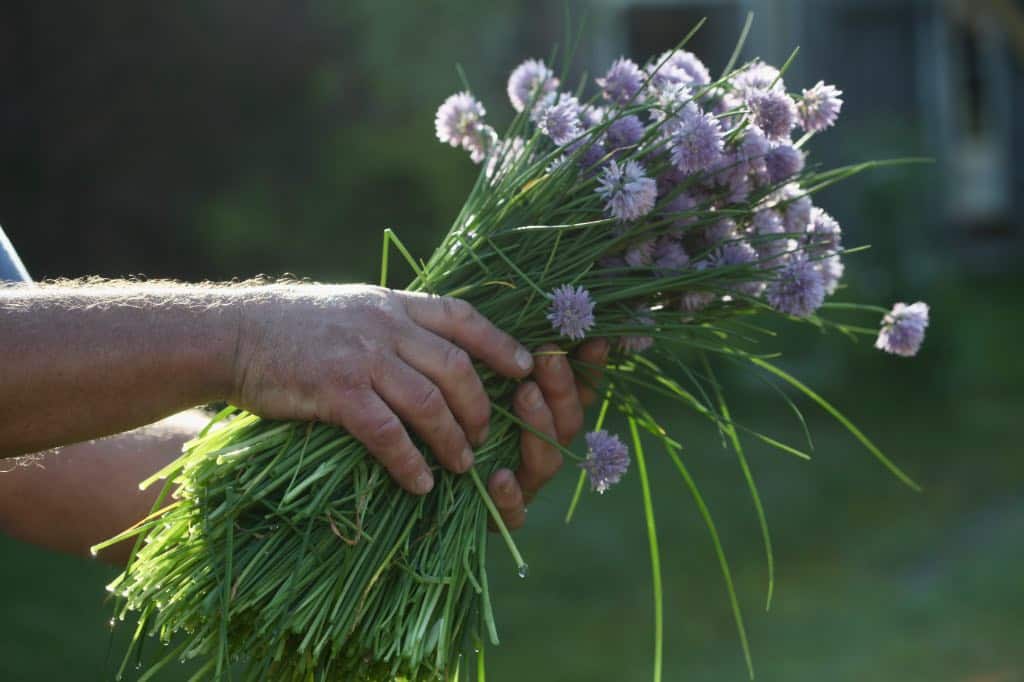
The method of harvest that you chose is a personal choice, and both harvesting techniques work well. Harvesting by the bunch can be quicker.
- To harvest the chives by the handful, first grab a bunch of chive leaves in your hand. Trim the bunch back to within an inch or two from the bottom of the plant.
- These leaves will continue to grow on the plant, even after they have been cut.
- Harvesting by the handful is also likely to include a few weeds, and maybe even a few yellow bits of chive. Just pull these from the mix, or pull them out later, when you get the bunch into the kitchen.
- If you prefer to selectively harvest the chive leaves, rather than harvesting by the handful, search for and remove only the largest leaves.
- This technique allows the smaller and finer leaves to remain growing in place, allowing them to continue to grow on to maturity.
- After harvesting the chives, bring them inside, to sort them and prepare them for drying.
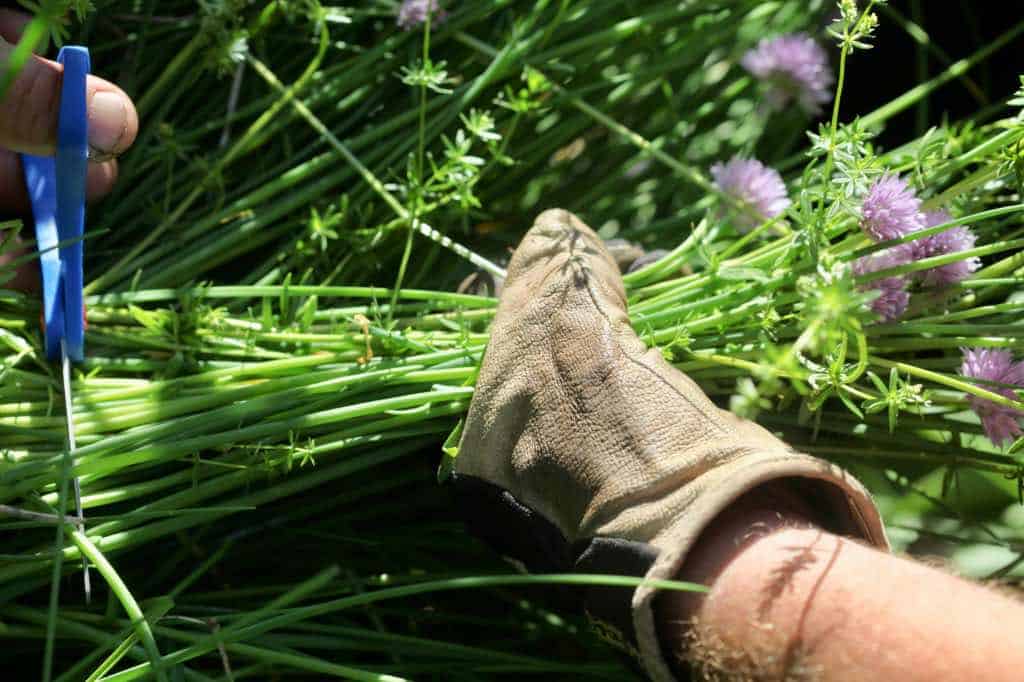
Preparing The Chives For Drying
- Before drying chives, it's always a good idea to give them a good rinse under cool water to remove any bugs or specks of dirt, which may have been brought in from the garden.
- Some gardeners soak the chives in a bowl of cold water with a splash of vinegar, to further kill any little critters.
- Set the chives down on a clean kitchen towel or on some paper towels, to dry off the excess moisture. You can also use a salad spinner to get rid of the water.
- Sort through the chives, and remove any yellow pieces, or bits of debris that does not belong. Essentially you are cleaning the freshly harvested bunch so that you only have chive leaves in the pile.
- Remove any flower stems as well, which look very similar to the leaves, however are much stiffer.
- I tend not to use the stems, as they are more woody and not great for eating.
- Next place the chive leaves on a cutting board for chopping.
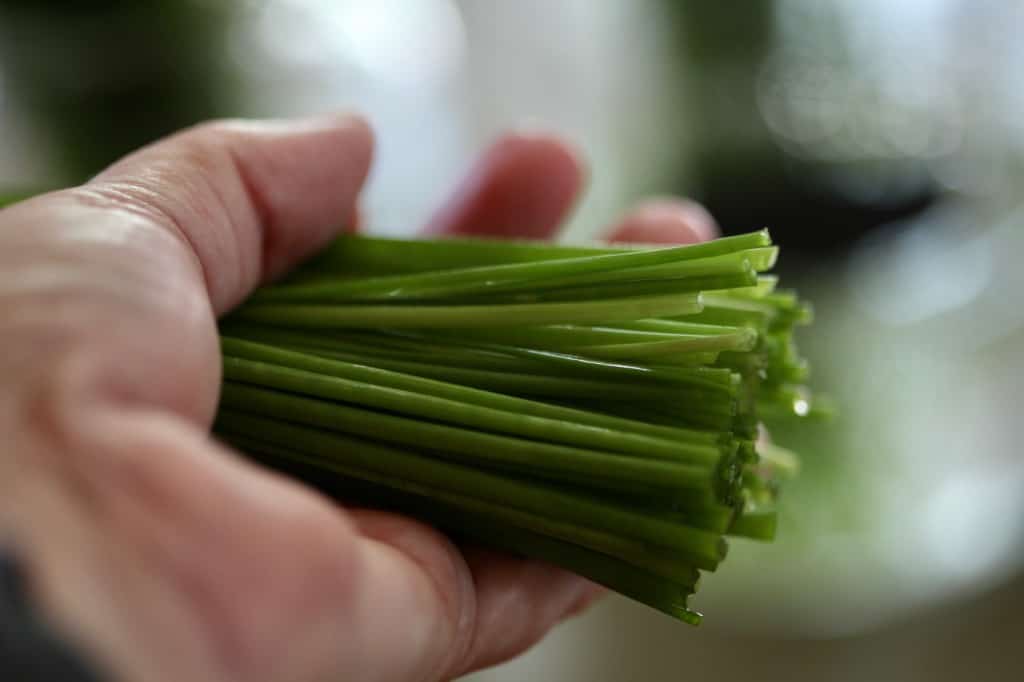
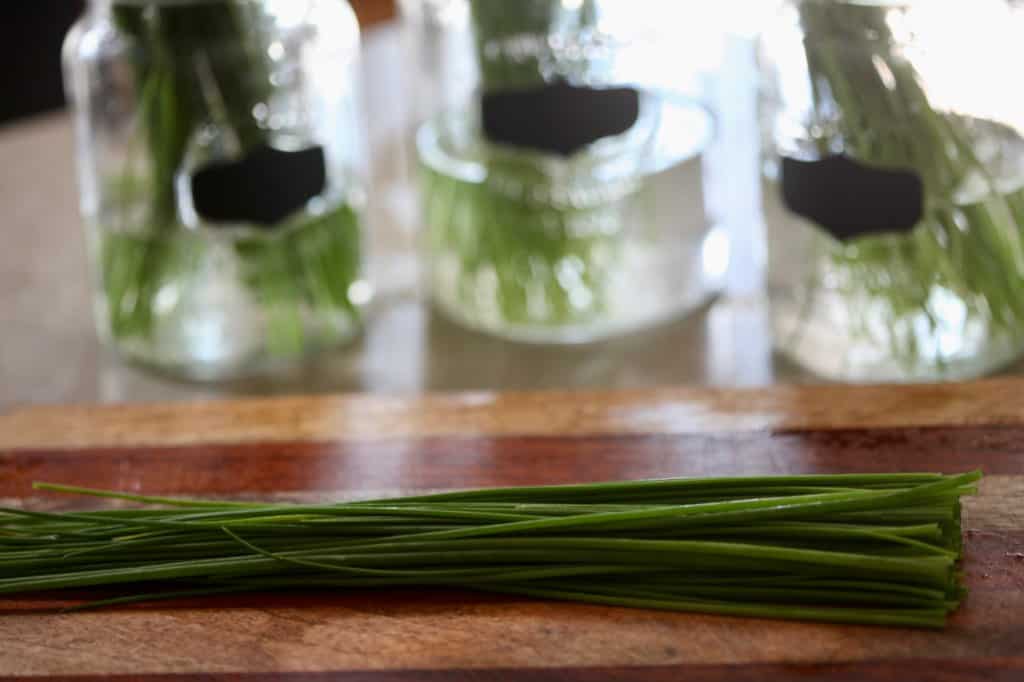
Cutting The Chives For Drying
The method that you use for drying the chives will determine the length in which to cut the leaves.
When drying chives in the dehydrator or air fryer, having longer pieces can help prevent the parts from blowing around as they dry.
I tend to keep the leaves longer in these appliances, at about three inches in length or more.
The pieces can always be cut down into smaller bits or even crushed, after they have finished drying.
Chives to be dried in the oven can be cut into small pieces, about ⅛ to ¼ inches in length.
If you are hanging the chives to dry, leave the pieces intact.
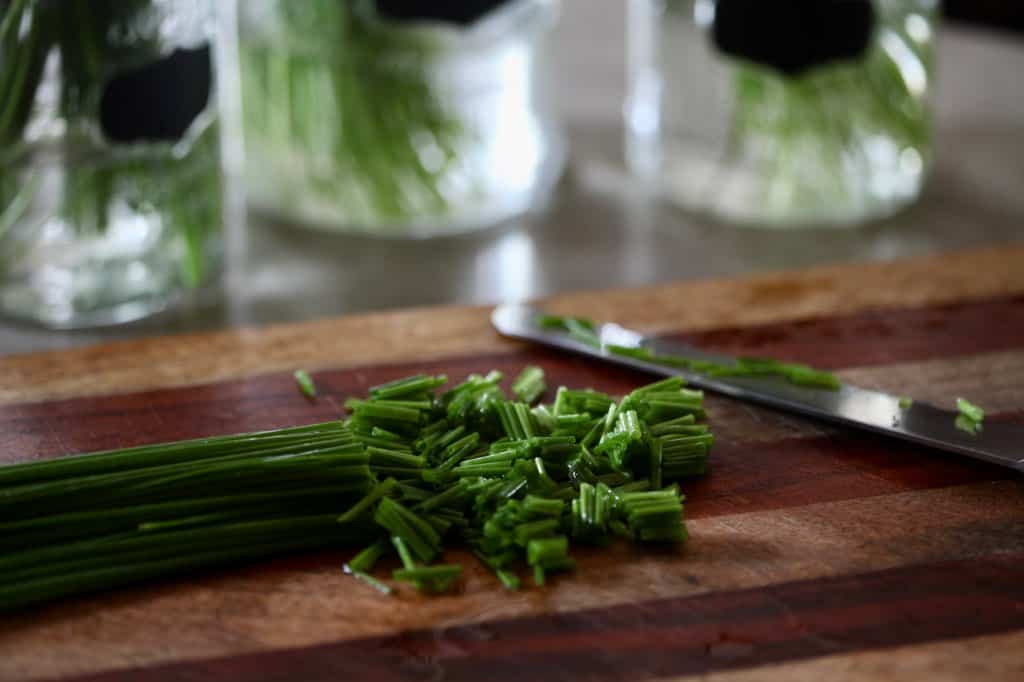
Drying Chives In A Dehydrator
Dehydrating chives in a food dehydrator is probably one of the easiest methods for drying chives.
The dehydrator is an excellent appliance for drying most herbs.
A dehydrator drys herbs at lower temperatures, over a longer period of time. This helps to preserve the goodness and nutritional value of the herbs, which is beneficial.
- To dehydrate herbs, including chives, the ideal temperature on the dehydrator is 135°F.
- Cut the chive pieces down to about three or four inches, to prevent them from slipping through the holes in the dehydrator when the fan blows.
- Place the chive pieces in an even layer on each rack of the dehydrator.
- Dry in the dehydrator for approximately three hours, or until the pieces are dry and crunchy.
- Further crush or cut the pieces with scissors into smaller sized pieces, for ease of use.
- Store in an airtight container.
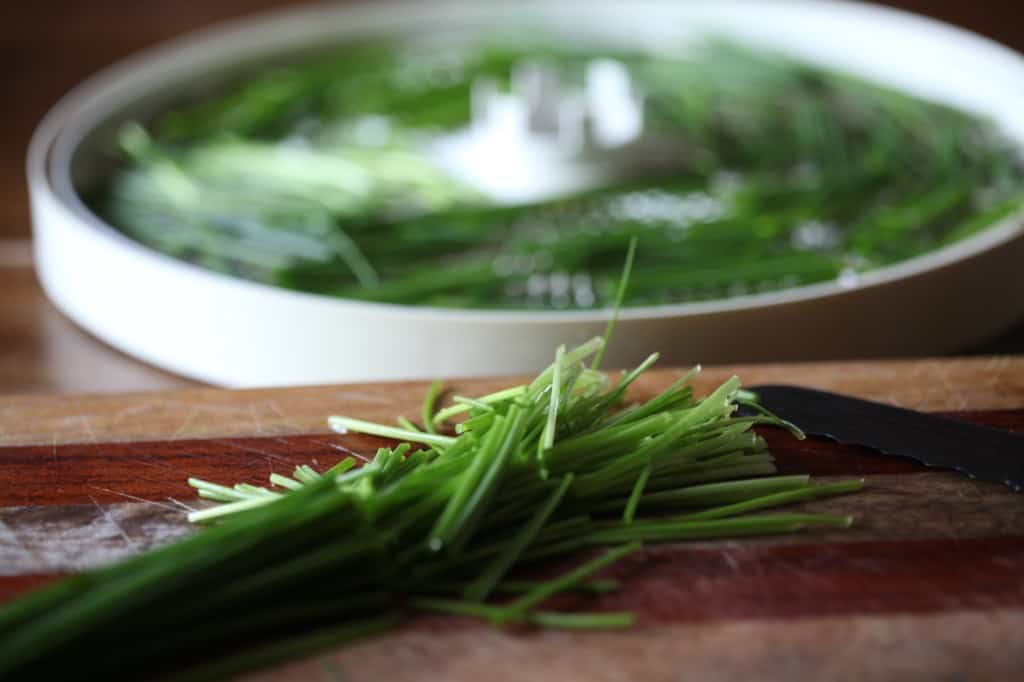
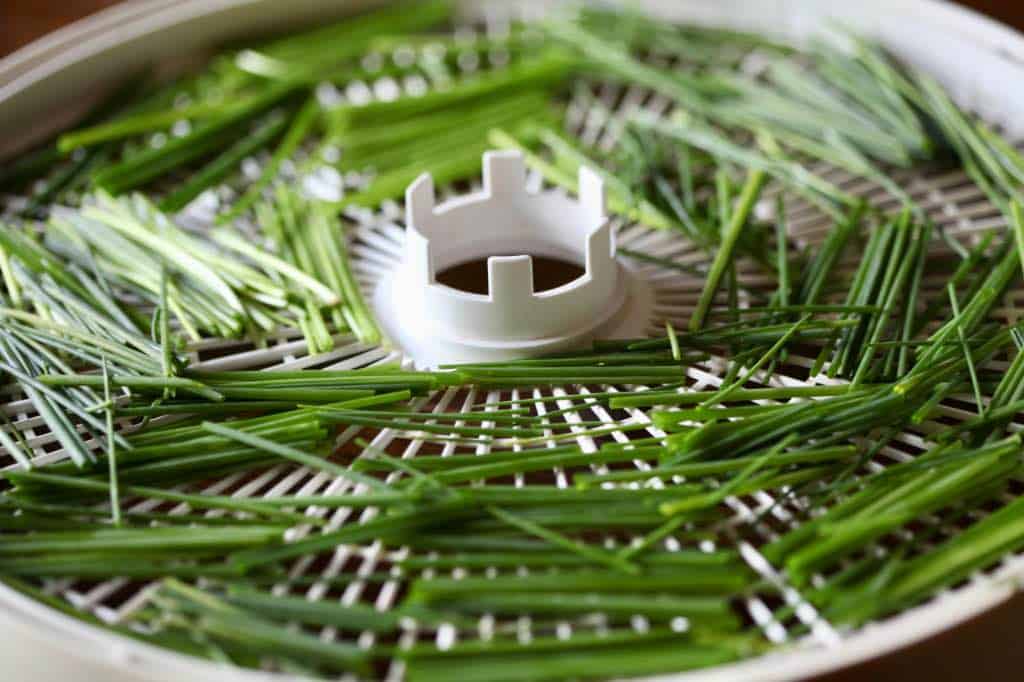
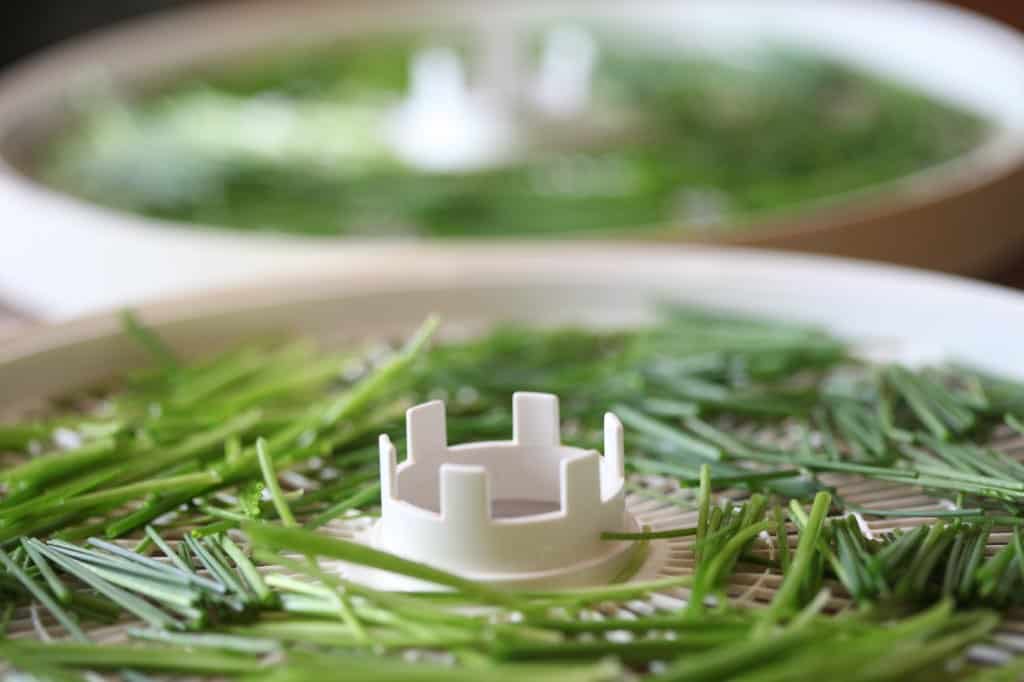
Drying Chives In The Oven
The oven method is also a great way to dry chives, although the temperature settings are higher than for the dehydrator.
I find that the chives dried in the oven are not quite as green as those dried in the dehydrator, although they taste just as delicious.
- Set the oven to it's lowest temperature. The lowest temperature on my oven is 170°F.
- You can also reduce the temperature even further by propping open the oven door slightly if you wish.
- Place the chopped chives on a cookie sheet in a single layer, and place in the oven for approximately two hours.
- Watch that they do not become over done, as if this occurs the pieces will turn brown.
- Remove from the oven when dried, and allow to cool down completely.
- Store in an air tight container.

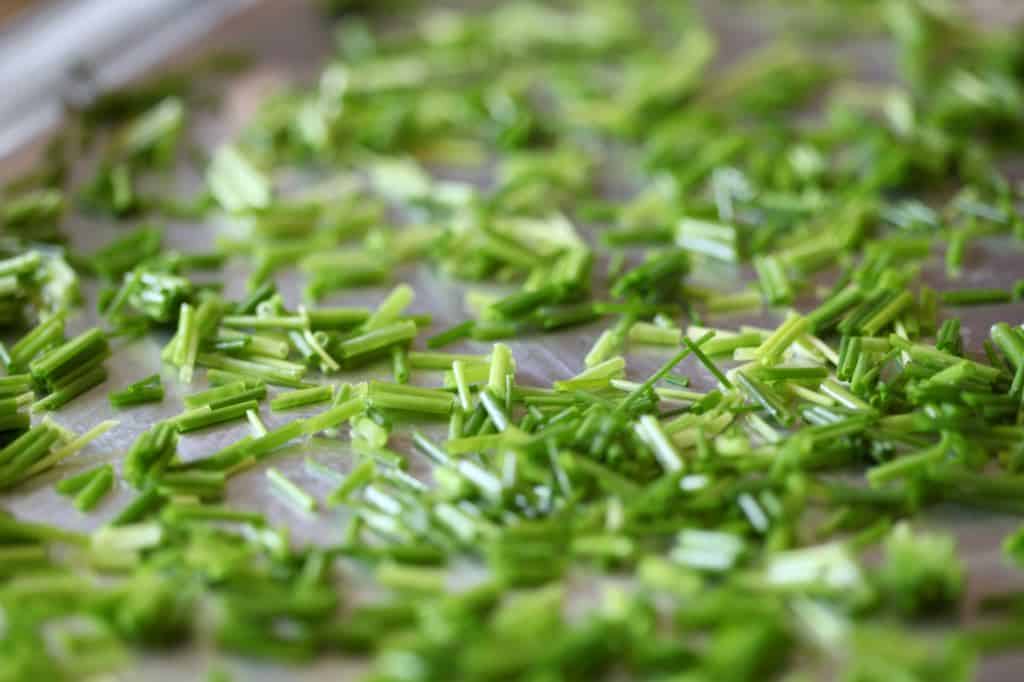
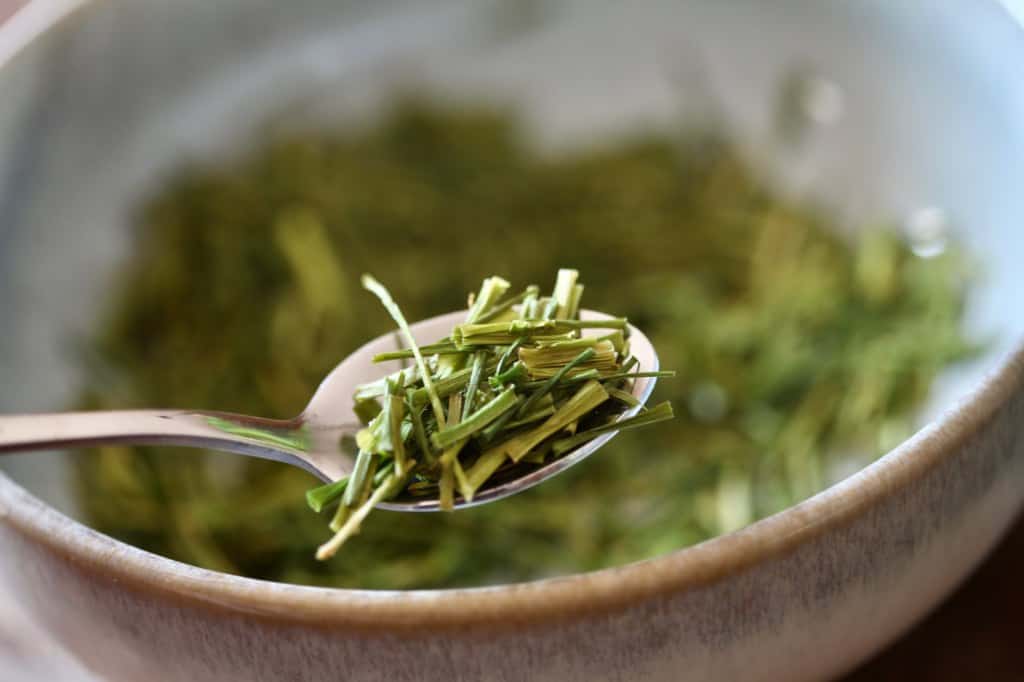
Drying Chives In The Air Fryer
The air fryer has become another method of preserving many foods by dehydrating.
An important consideration about using an air fryer is to make sure that it has a dehydrating function. This allows the herbs to slowly dehydrate at a lower temperature.
If your air fryer does not have a dehydrate function, use a different method for drying your chives.
If there is a dehydrate function on your air fryer, you are all set. This machine will function the same as the dehydrator, although with most likely a smaller space for drying.
- Set the dehydrate temperature to 135°F.
- The chives will be done in approximately two to three hours, depending on your individual machine.
- Keep an eye on the herbs during the last hour, until you get to know your own individual machine's drying time for chives specifically.
- Remove when the chives are dry and crunchy.
- Store in an air tight container.
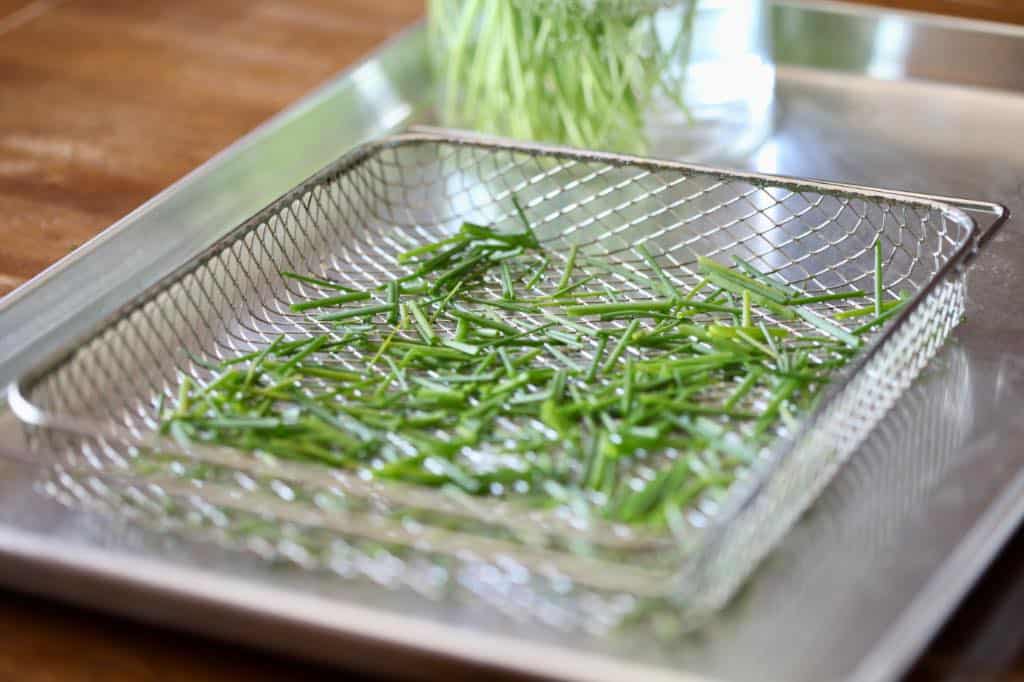
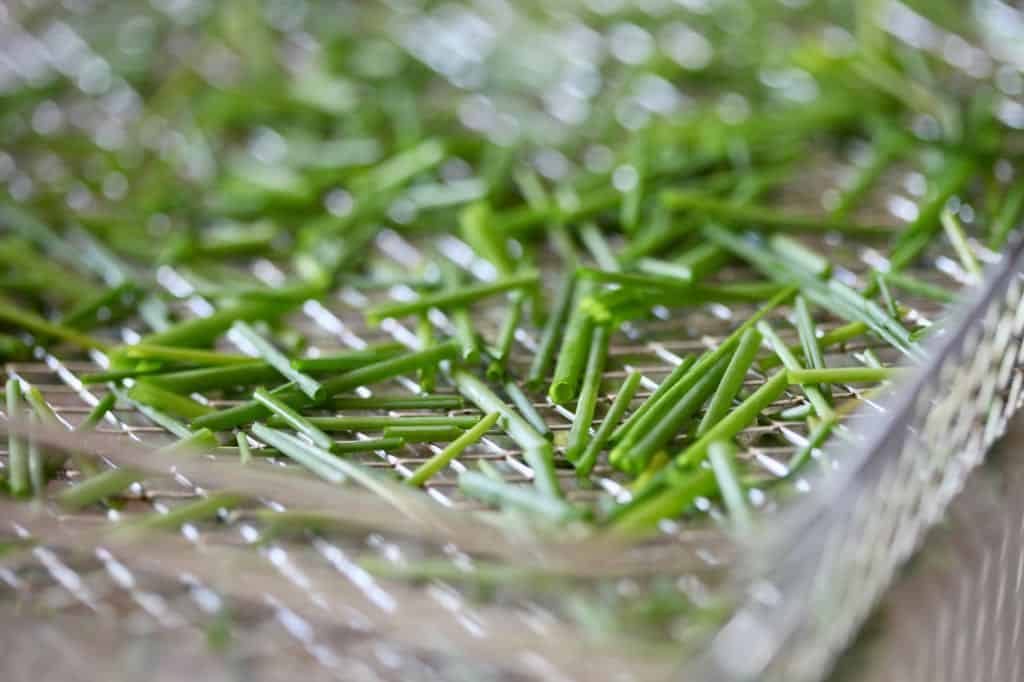
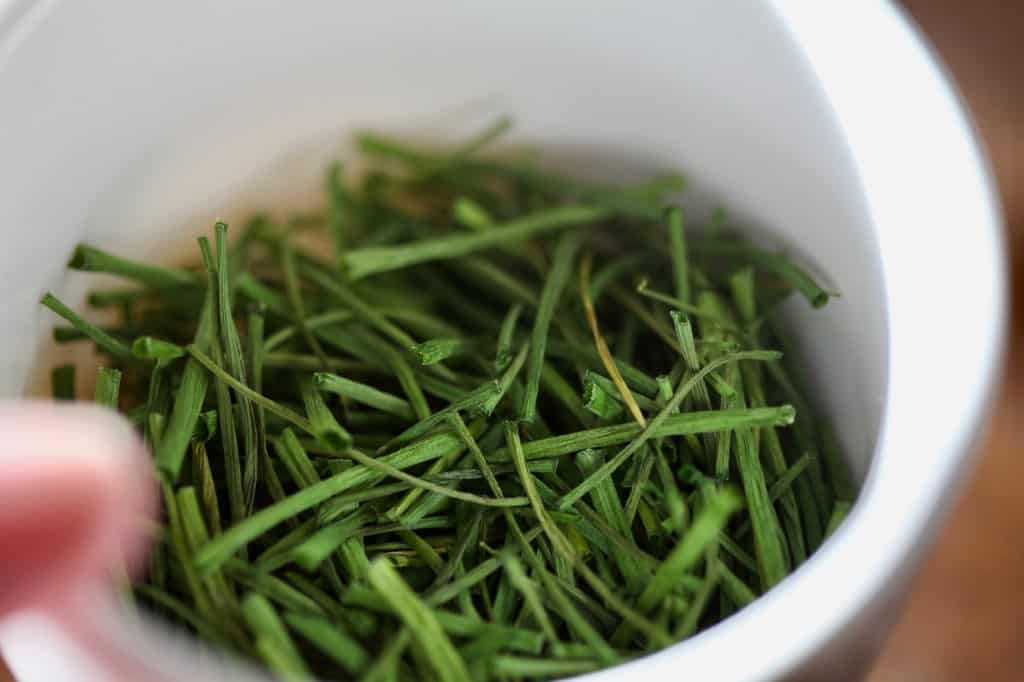
Hanging Chives To Dry
Hanging chives to dry is a traditional way of drying herbs.
- This technique is easy to do, however sometimes is not as successful as drying the chives quickly using the above techniques.
- Gather the chive leaves together in a loose bundle.
- The bunches can be tied together with a rubber band, and dried by hanging in a dry location out of direct sunlight.
- When the bunch is completely dry, cut into small pieces with scissors, and store in an airtight container.
I found that my air dried chives tended to yellow quickly, and lose flavour compared to the chives dried in the oven or those that were dehydrated. The bunches that were chosen to dry by hanging had smaller more immature leaves.
If using this air dry method, I would encourage using larger, thicker and more mature chive leaves.
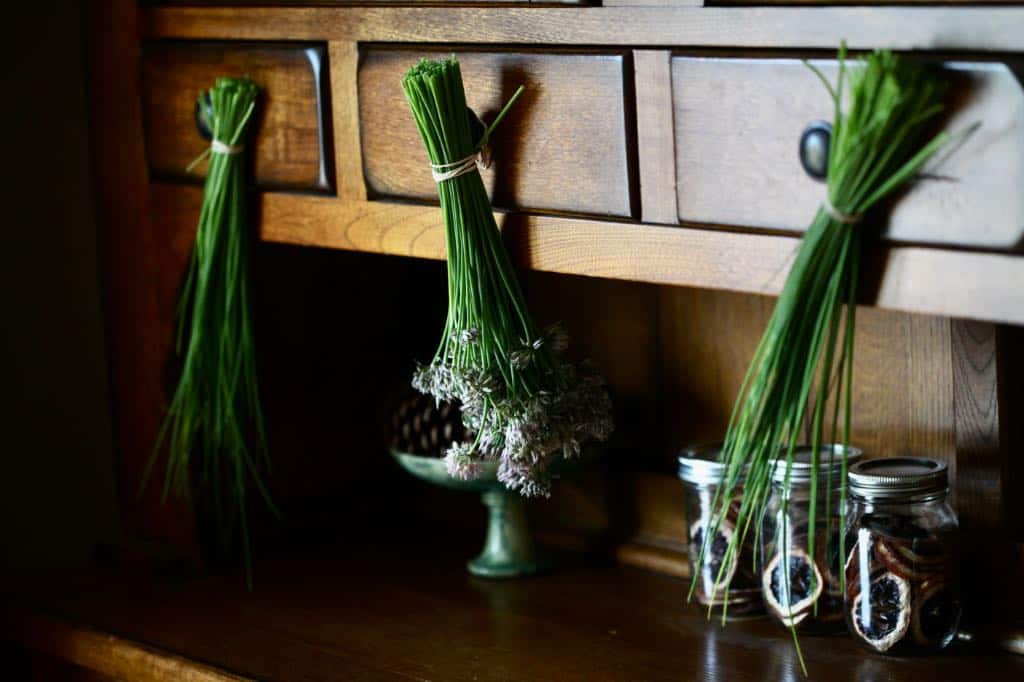
How Long Does It Take To Dry Chives?
The drying time for dehydrating in the dehydrator and air fryer is generally about two to three hours.
Drying time in the oven is less, due to a higher drying temperature. Oven drying takes about two hours or less.
Drying by hanging in bunches can take one to two weeks.
There are certain variables which can change the drying time frames.
These variables include:
- the environment, such as temperature and humidity in the air.
- make and model of the appliances used, as different models of air fryers and dehydrators can have different drying times.
- the size of the leaves, and moisture level within the leaves will also make a difference in drying time.
Be careful not to over dry your chives, especially in the oven.
This will cause browning of the leaves, and decrease nutritional value. The chives may also taste bitter if overdone, like burnt onions.
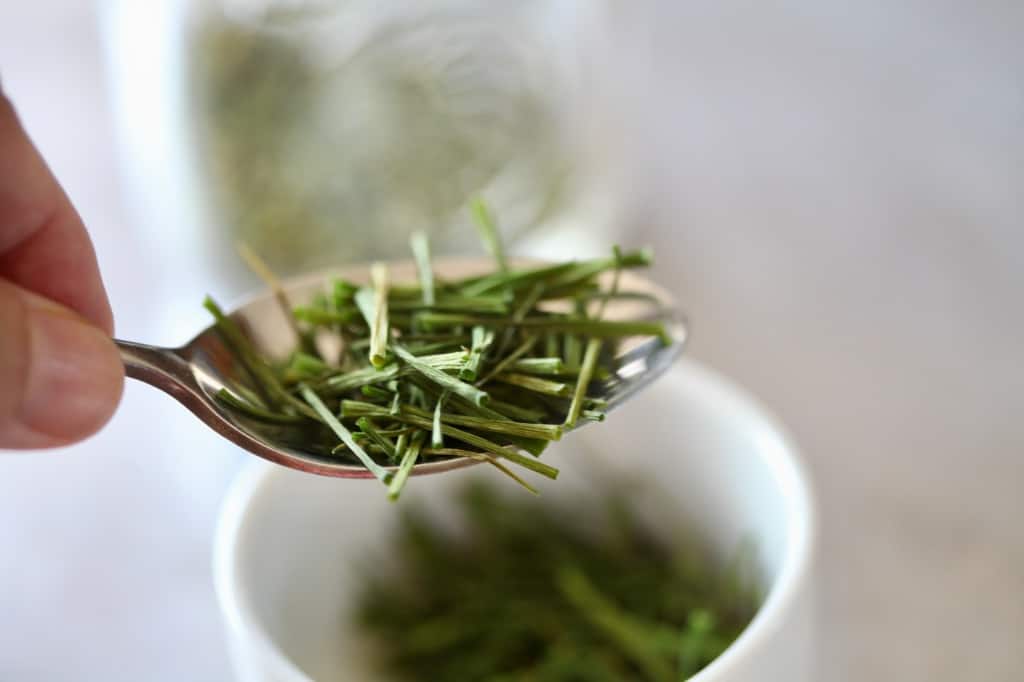
Storing Dried Chives
Store dried or dehydrated chives in an airtight container such as a mason jar. Place the container in a cool dry place and dark location, away from heat and direct sunlight.
The dried chives can be kept preserved for several years in this manner. The shelf life is approximately two years with proper storage methods.
Dried chives never last that long in our house however, as they are used up long before the expiry date.
Make sure to label the container with the expiration date for safe storage.
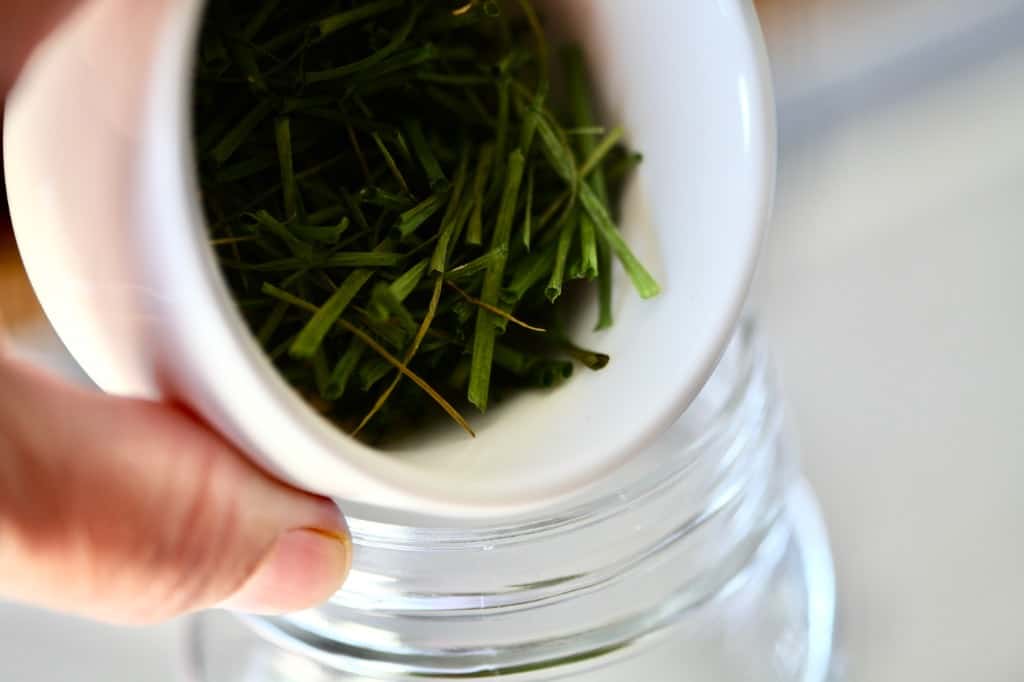
Conclusion
In our house, chives now make it into the kitchen on a regular basis during the growing season. These delicious herbs are no longer just a pretty face in the flower garden.
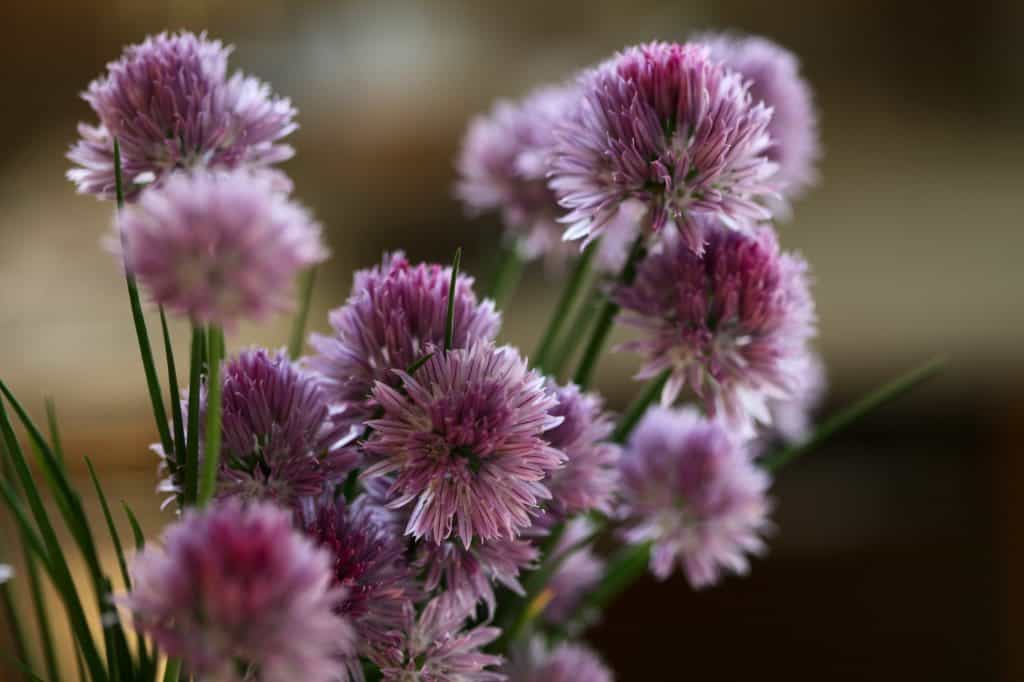
Fresh chives can be harvested and used all summer long.
Fresh chives are used in chive butter, cream cheese, and salads.
The chive blossoms are used as a perfect garnish for many dishes, and are also used to make chive blossom vinegar.
Consider also drying some chives during the season. Add them to the spice cabinet to use in their dried form for their fresh flavor throughout the year.
Dried chives can be sprinkled into soups, sauces, dips, and salad dressings for a light onion touch. Add them to sour cream for an instant dip.
They can also be used in salads, and sprinkled onto baked potatoes and potato dishes.
You are only limited by your own imagination.
Consider harvesting some chives to dry this growing season. You will be happy that you did.
Also consider freezing chives, which is another great way to preserve these fabulous garden herbs.
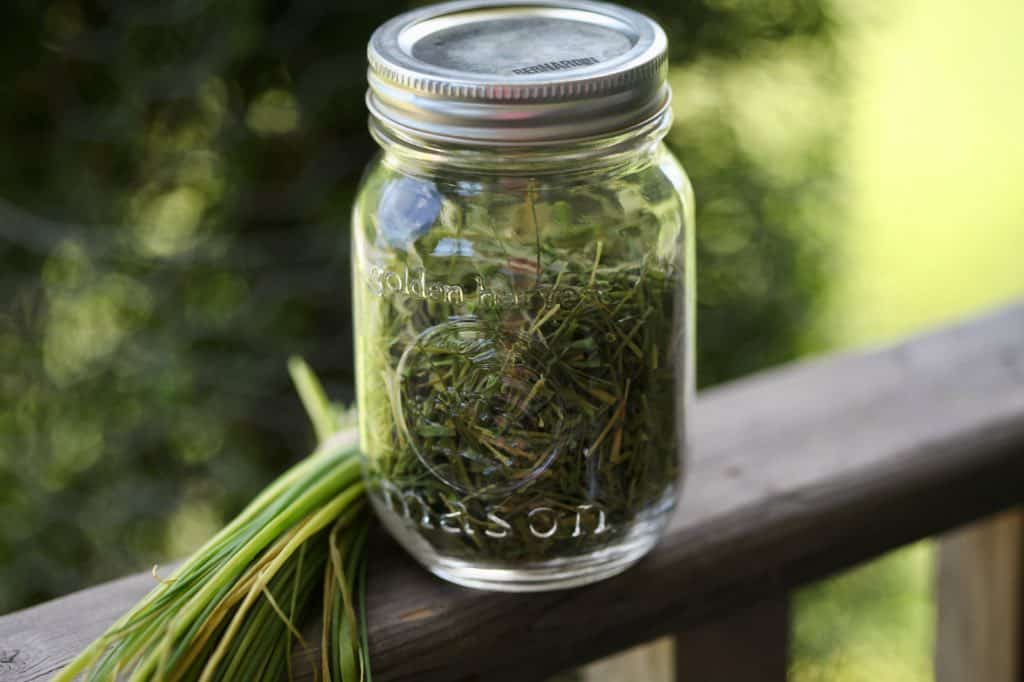
Have you ever dried chives from your garden? Be sure to leave a comment below, to share your experience!
Other Posts You May Like:
PIN IT FOR LATER!
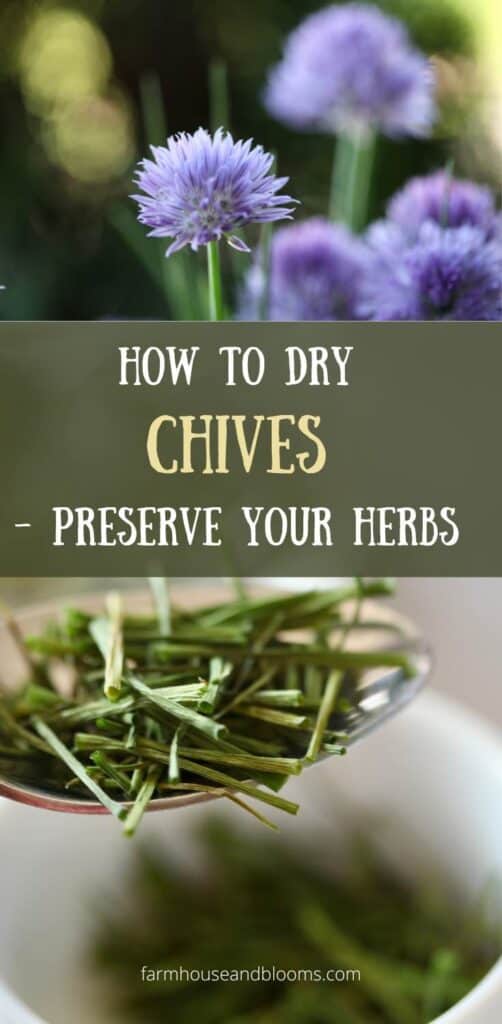



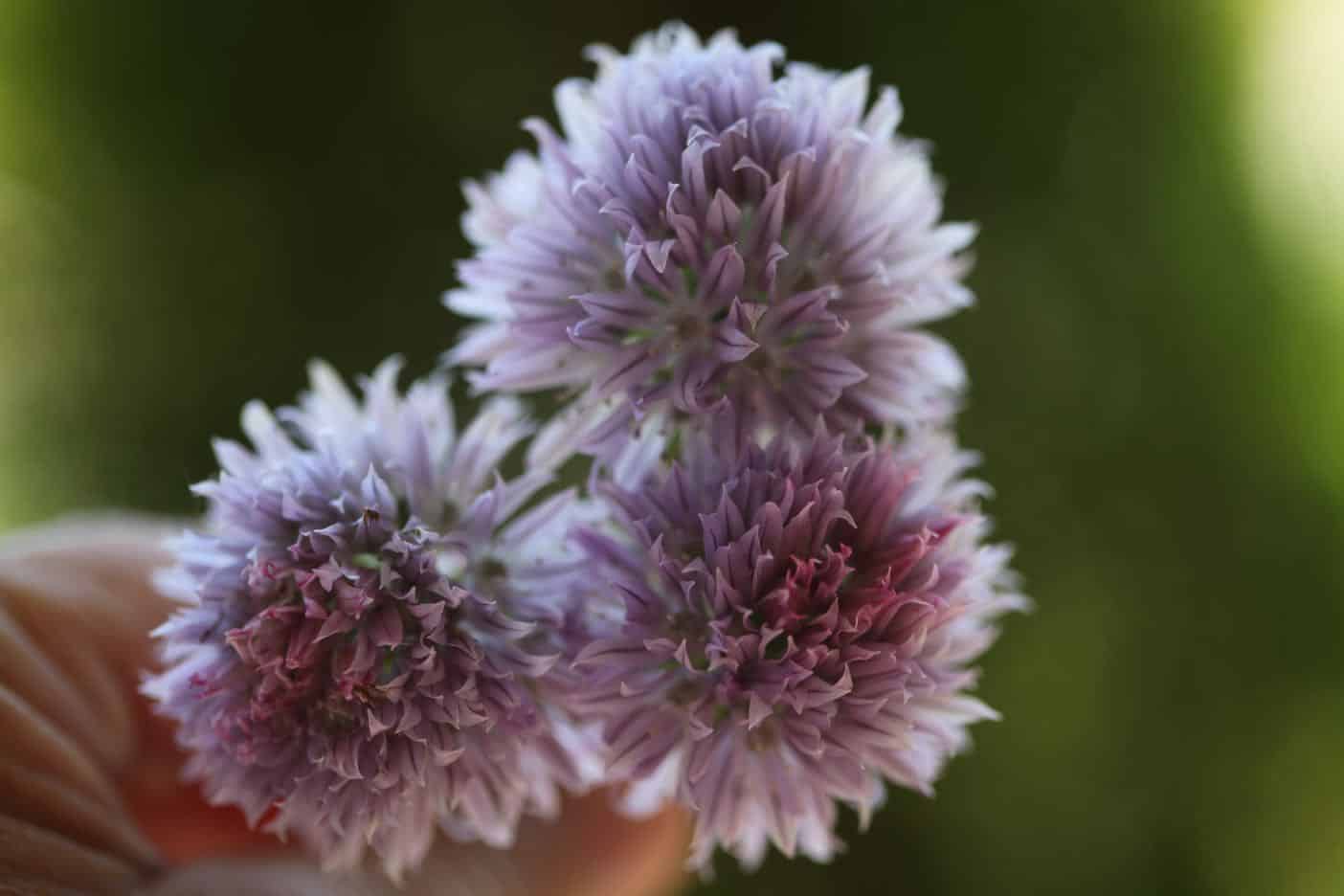
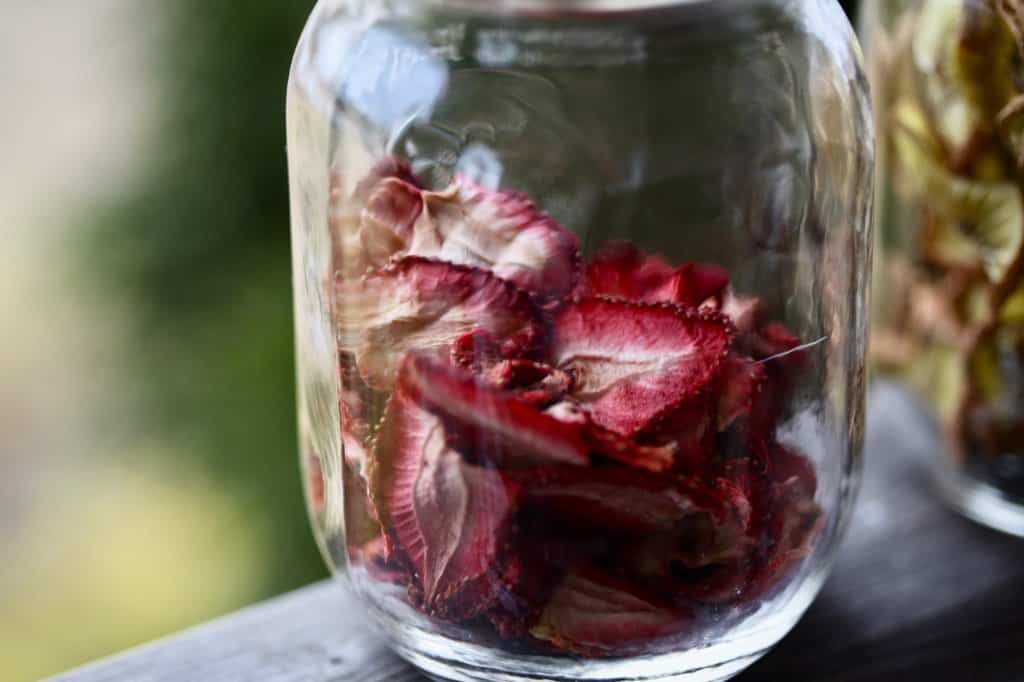

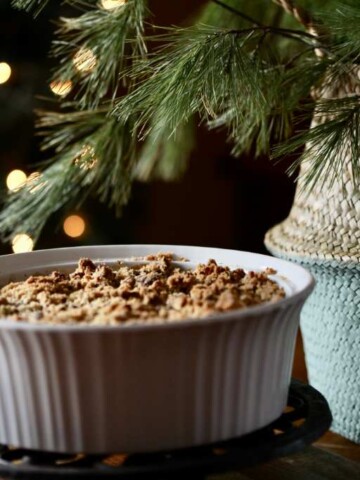
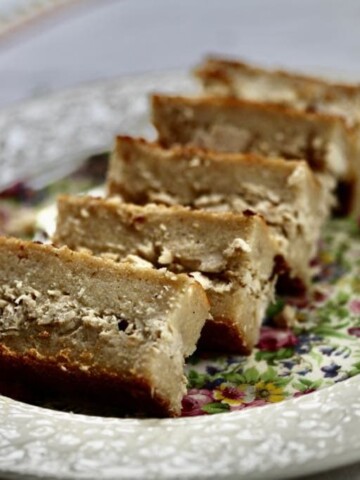
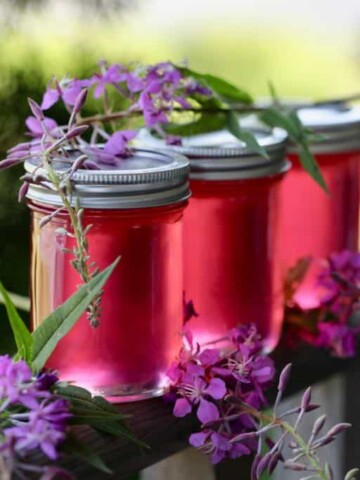
Leave a Reply